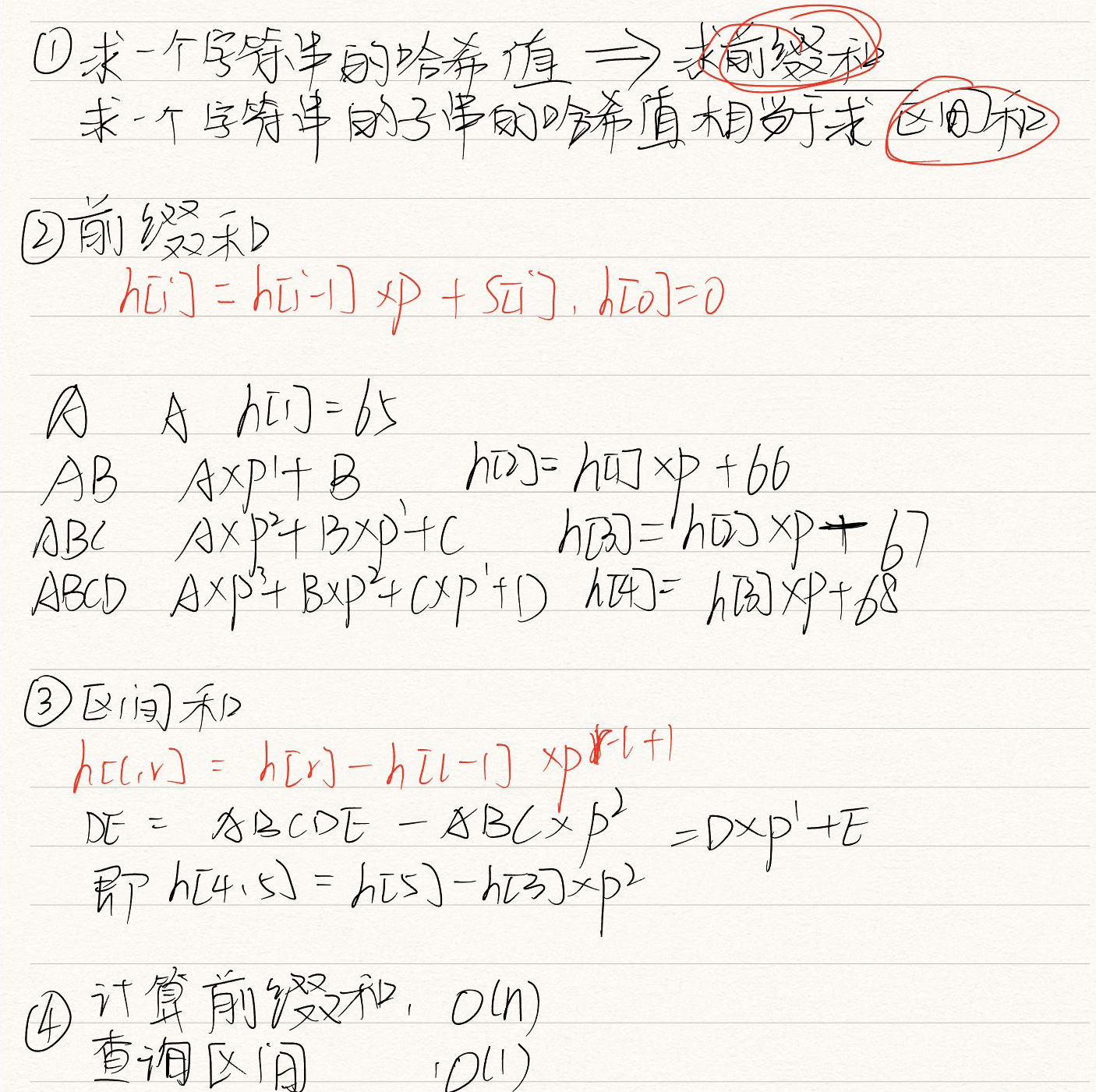JAVA实现字符串哈希
实现字符串哈希的注意点
(1)java没有c++中unsigned long long类型,但是Long.MAX_VALUE就足够了
(2)本题字符串哈希下标是从1开始的,处理的时候需要注意数组下标
(3)解释:
p数组用来预处理p的次幂,h数组用来存前i项的哈希函数值。
字符串哈希的基本原理

AC代码:
import java.io.BufferedReader;
import java.io.InputStreamReader;
import java.util.Arrays;
public class Main {
static BufferedReader br = new BufferedReader(new InputStreamReader(System.in));
static int MAXN = (int)(1e6 + 100);
static long[]p = new long[MAXN];
static long[]h = new long[MAXN];
static int P = 13331;
static int n = 0;
static long M = Long.MAX_VALUE; //越大越好
public static void main(String[] args) throws Exception {
String nm[] = br.readLine().split(" ");
n = Integer.parseInt(nm[0]);
int m = Integer.parseInt(nm[1]);
String str = br.readLine();
char s[] = str.toCharArray(); //字符串转字符数组
p[0] = 1;
h[0] = 0;
for(int i = 0; i < n; i++) {
p[i + 1] = p[i] * P; //预处理p的次幂
h[i + 1] = h[i] * P + s[i]; //求前i项的哈希函数值
}
while((m--) > 0) {
String lr[] = br.readLine().split(" ");
int l1 = Integer.parseInt(lr[0]);
int r1 = Integer.parseInt(lr[1]);
int l2 = Integer.parseInt(lr[2]);
int r2 = Integer.parseInt(lr[3]);
if(substr(l1,r1,l2,r2)) {
System.out.println("Yes");
}else {
System.out.println("No");
}
}
}
//查询区间
static long get(int l, int r) {
return h[r] - h[l - 1] * p[r - l + 1];
}
//判断子串是否相同
static boolean substr(int l1,int r1,int l2,int r2) {
return get(l1,r1) == get(l2,r2);
}
}

